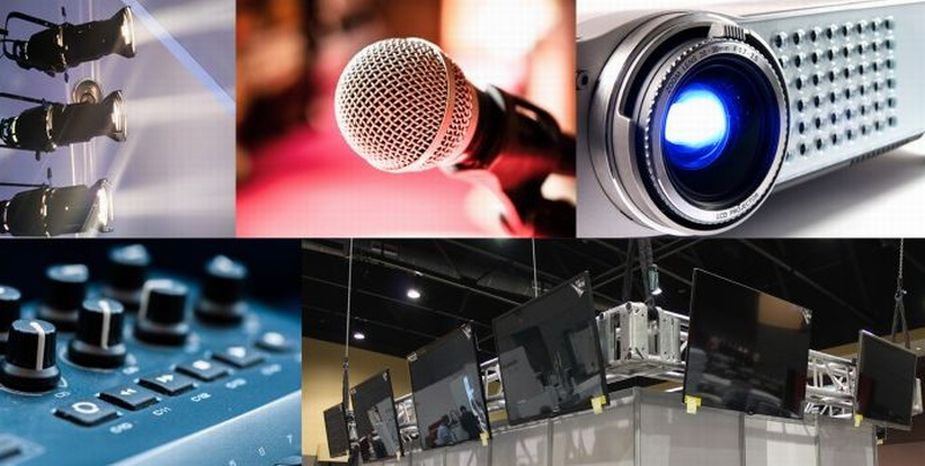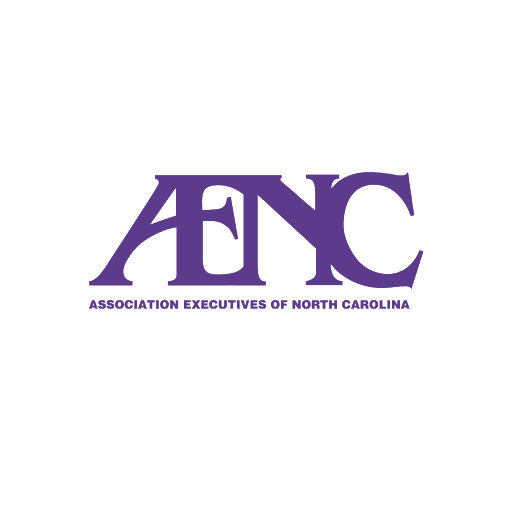The future of presentations with audio visual charlotte nc
Wiki Article
Recognizing the Addition of Audio Visual Innovation in Today's Educational Environments
The combination of audio-visual technology in educational settings has actually changed the teaching and learning process. Educators now have access to tools that accommodate numerous discovering styles, enhancing trainee involvement and partnership. The incorporation of these innovations presents both opportunities and difficulties. Recognizing just how to successfully execute these tools is essential. What approaches can teachers employ to take full advantage of the benefits of audio-visual innovation in their class?The Development of Audio-Visual Modern Technology in Education
As educational requirements developed over the years, audio-visual modern technology went through substantial transformations that reshaped the discovering setting. Devices such as film projectors and slide programs were the key means of incorporating visual components into classrooms. These very early technologies given instructors with the ability to present information dynamically, yet they were limited in availability and interactivity.With the arrival of videotape recorder in the 1970s, classrooms began to include recorded lessons, expanding the extent of academic resources. The intro of desktop computers in the 1980s further reinvented this landscape, permitting the creation of multimedia presentations and interactive discovering experiences.
The surge of the internet in the 1990s noted a turning point, making it possible for real-time accessibility to a wide range of audio-visual products. Today, electronic tools such as interactive whiteboards and on-line understanding systems proceed to enhance the educational experience, fostering engagement and cooperation among learners.
Benefits of Audio-Visual Tools for Diverse Knowing Styles
Audio-visual tools play an important role in providing to diverse understanding designs by improving aesthetic discovering and improving auditory engagement. By incorporating images, video clips, and noise, these innovations produce an even more comprehensive instructional setting. This complex method allows educators to address the diverse choices and requirements of students efficiently.Enhancing Visual Discovering
Interaction in the understanding procedure is substantially improved through using audio-visual devices, providing to different discovering styles. These devices, such as video clips, infographics, and interactive presentations, give aesthetic stimuli that assist understanding and retention. Visual students, particularly, gain from the unification of images and computer animations, which can streamline complex ideas and enhance understanding. Additionally, audio-visual sources can illustrate real-world applications, making finding out more relevant and appealing. By integrating color, movement, and sound, instructors can develop a dynamic learning environment that captures pupils' attention and promotes much deeper cognitive links. Inevitably, the calculated use audio-visual innovation not just supports aesthetic understanding but likewise improves the overall academic experience for varied students.Improving Auditory Engagement
A considerable advantage of integrating audio-visual tools in education is their ability to boost acoustic interaction among trainees. These devices, which encompass multimedia discussions, podcasts, and interactive audio elements, accommodate different finding out designs, especially profiting acoustic learners (audio visual charlotte nc). By incorporating audio and narrative, instructors can develop immersive experiences that capture trainees' interest and reinforce understanding. This engagement is essential, as it fosters a much deeper understanding of the product and advertises retention. In addition, audio-visual devices can facilitate collaborative discovering settings, urging students to join discussions and share their insights. Ultimately, the incorporation of audio-visual innovation not just sustains acoustic interaction yet likewise improves the total academic experience, making finding out more vibrant and reliable for all pupilsEnhancing Involvement Via Interactive Learning

Gamification elements, such as tests and simulations, can improve motivation and retention, making finding out a lot more enjoyable and efficient. These techniques not just promote cognitive engagement yet likewise provide to diverse discovering designs, guaranteeing that all trainees can get involved meaningfully. Consequently, interactive discovering environments foster a feeling of community and belonging, eventually causing enhanced scholastic outcomes. With the assimilation of audio visual innovation, educators can transform typical class right into vibrant areas where students flourish and proactively form their educational journeys.
Linking Theory and Experiment Multimedia Resources
Multimedia sources act as a vital web link between academic principles and practical application in educational settings. By enhancing engagement, promoting collaborative knowing experiences, and supporting varied understanding designs, these devices develop a more comprehensive and vibrant knowing setting - audio visual charlotte nc. This method not just promotes much deeper understanding however likewise prepares pupils for real-world challenges
Enhancing Involvement With Multimedia
Involvement in instructional setups greatly increases when instructors integrate multimedia resources into their mentor techniques. Making use of video clips, podcasts, and interactive presentations enhances the finding out experience, enabling students to get in touch with the material on multiple degrees. Multimedia resources accommodate different discovering styles, providing aesthetic, acoustic, and kinesthetic stimuli that can hold pupils' focus better than standard lecture approaches. In addition, these resources can simplify intricate principles, making them more accessible and unforgettable. By incorporating multimedia, teachers can produce a dynamic class setting that fosters inquisitiveness and motivates learners. Ultimately, the strategic usage of audio-visual innovation offers to connect the gap between theoretical expertise and practical application, enhancing the instructional experience for both trainers and students.Helping With Collaborative Learning Knowledge
Countless studies indicate that joint understanding experiences markedly enhance student end results when incorporated with multimedia sources. Multimedia devices help with communication amongst pupils, enabling them to take part in analytic and vital believing jointly. By using video clip conferencing, more info collaborative systems, and interactive presentations, instructors produce settings helpful to synergy and shared understanding. These innovations allow trainees to communicate their ideas efficiently and receive instant comments, cultivating a much deeper understanding of the topic. In addition, multimedia resources can offer intricate principles in even more absorbable layouts, promoting discussion and partnership. As an outcome, the combination of collective understanding and audio-visual innovation not just enriches the academic experience however additionally prepares students for real-world team effort dynamics, highlighting the value of cooperation and collective knowledge construction.Sustaining Diverse Learning Styles
While conventional teaching methods typically accommodate a limited range of learning choices, the assimilation of audio-visual innovation supplies an extra comprehensive technique to education and learning. By utilizing multimedia resources such as video clips, interactive simulations, and electronic discussions, educators can attend to numerous learning styles, consisting of visual, acoustic, and kinesthetic. This versatility allows for differentiated direction, allowing pupils to engage with web content in manner ins which reverberate with their individual choices. Furthermore, audio-visual tools can promote deeper understanding by providing numerous representations of intricate ideas. Consequently, pupils who might have a hard time with conventional approaches can discover alternate pathways to success, fostering a much more fair understanding atmosphere that sustains academic achievement for all learners.Difficulties in Executing Audio-Visual Modern Technology
Audio-visual modern technology holds excellent guarantee for improving academic experiences, its execution commonly comes across substantial challenges. One main concern is the economic burden related to purchasing and maintaining such devices, which can strain budgets, especially in underfunded establishments. Additionally, insufficient training for instructors can hinder efficient combination, leaving them ill-prepared to make use of the modern technology fully. Technical problems, such as software program malfunctions and compatibility troubles, may likewise interrupt lessons and irritate both instructors and trainees. In addition, differing degrees of pupil accessibility to technology outside the classroom can create variations in discovering chances. Lastly, the capacity for over-reliance on innovation may diminish vital mentor methods, ultimately restricting the academic experience. Attending to these challenges requires a detailed method, including ample financing, professional growth, and equitable access to sources, to ensure that audio-visual technology can be leveraged efficiently in today's instructional settings.Ideal Practices for Integrating Innovation in the Classroom

In addition, fostering an interactive setting through collaborative tools motivates trainee involvement and engagement. Making use of varied audio-visual resources deals with numerous learning styles, accommodating visual, acoustic, and kinesthetic students. Routinely examining the impact of innovation on trainee discovering aids instructors fine-tune their techniques and adjust to transforming demands. Including students in the selection of modern technology advertises ownership and inspiration. By adhering to these ideal methods, instructors can develop a vibrant class environment that efficiently integrates technology and boosts the instructional experience for all trainees.
The Future of Audio-Visual Technology in Education And Learning
As class progressively embrace modern technology, the landscape of audio-visual devices in education proceeds to advance (audio visual charlotte nc). Future improvements are expected to concentrate on better interactivity and personalization, enabling educators to customize discovering experiences to individual student needs. Developments such as increased truth (AR) and virtual truth (VR) will likely give immersive discovering environments, boosting trainee engagement and understanding
Synthetic knowledge (AI) is poised to play a considerable duty in audio-visual technology by supplying real-time responses and adaptive understanding pathways. This combination might help teachers recognize and resolve trainee difficulties more efficiently. Cloud-based systems will certainly help with much easier accessibility to sources and partnership amongst pupils and instructors, despite location.
In addition to these technical developments, specialist growth for educators will be crucial, ensuring they are furnished to use these tools effectively. On the whole, the future of audio-visual innovation in education and learning assures to develop more dynamic, comprehensive, and impactful discovering experiences.
Regularly Asked Questions
How Can Teachers Choose the Right Audio-Visual Tools for Their Classrooms?
Selecting ideal audio-visual devices requires instructors to analyze their educational goals, consider student requirements, examine readily available modern technology, and look for referrals from peers or specialists, making certain tools efficiently improve knowing and interaction within their particular classroom environment.What Spending plan Factors to consider Are There for Applying Audio-Visual Modern Technology?
Budget plan considerations for carrying out audio-visual technology include first acquisition expenses, maintenance expenses, training for team, and possible software program licensing costs. Furthermore, long-term financial investment in updates and substitutes ought to also be factored right into economic preparation.Are There Particular Training Resources for Educators on Audio-Visual Tools?
Several establishments provide training sources for instructors on audio-visual tools, including on the internet training courses, workshops, and training guides. These resources intend to improve educators' skills and self-confidence in properly integrating modern technology right into their teaching methods.How Do We Gauge the Efficiency of Audio-Visual Modern Technology in Learning?
Gauging the effectiveness of audio-visual modern technology in learning includes evaluating trainee involvement, comprehension, retention prices, and total academic efficiency. Surveys, evaluations, and empirical research studies can provide useful insights into its effect on academic outcomes.What Prevail Mistaken Beliefs Concerning Audio-Visual Technology in Education?
Typical misconceptions about audio-visual innovation in education and learning include the idea that it guarantees engagement and discovering outcomes, as well as the assumption that all students profit similarly, forgeting specific knowing preferences and requirements.Report this wiki page